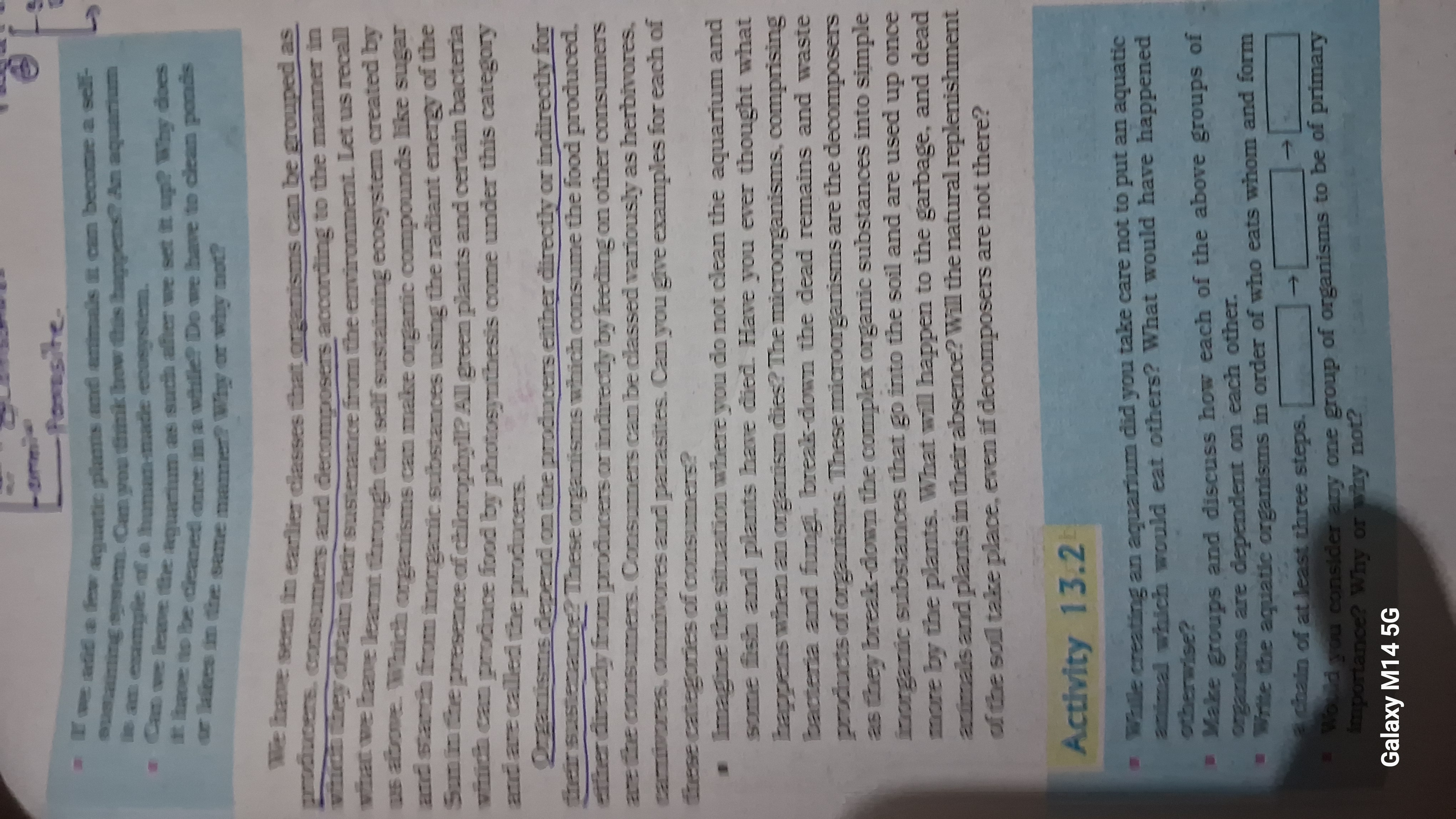While creating an aquarium, did you take care not to put an aquatic animal that would eat others? What would have happened otherwise? Discuss how the groups of organisms are depend... While creating an aquarium, did you take care not to put an aquatic animal that would eat others? What would have happened otherwise? Discuss how the groups of organisms are dependent on each other. Write the aquatic organisms in order of who eats whom and form a chain of at least three steps.

Understand the Problem
The question is asking about the roles of different organisms in an ecosystem, particularly focusing on producers, consumers, and decomposers. It invites a discussion about the importance of these groups and the consequences of their absence in an aquarium setup. Additionally, it prompts the user to reflect on the interactions among organisms and the food chain.
Answer
Predators can eat other species, disrupting balance. Example chain: algae → small fish → big fish.
Including predatory species in an aquarium can lead to a reduction or elimination of prey species, disrupting the balance and stability of the environment. A basic aquatic food chain example is algae → small fish → big fish.
Answer for screen readers
Including predatory species in an aquarium can lead to a reduction or elimination of prey species, disrupting the balance and stability of the environment. A basic aquatic food chain example is algae → small fish → big fish.
More Information
If predatory fish are introduced, smaller and weaker fish might be eaten, resulting in fewer species and destabilizing the aquarium ecosystem. Food chains help illustrate how energy moves through an ecosystem.
Tips
Common mistakes include adding incompatible species and not considering long-term ecological impacts.
Sources
- Our Environment | Class 10 | Activity 15.2 with Solution - bankofbiology.com
- While creating an aquarium did you take care not to put an aquatic... - askfilo.com
- Activity 13.2 Class 10 Science Our Environment - Physicscatalyst - physicscatalyst.com
AI-generated content may contain errors. Please verify critical information